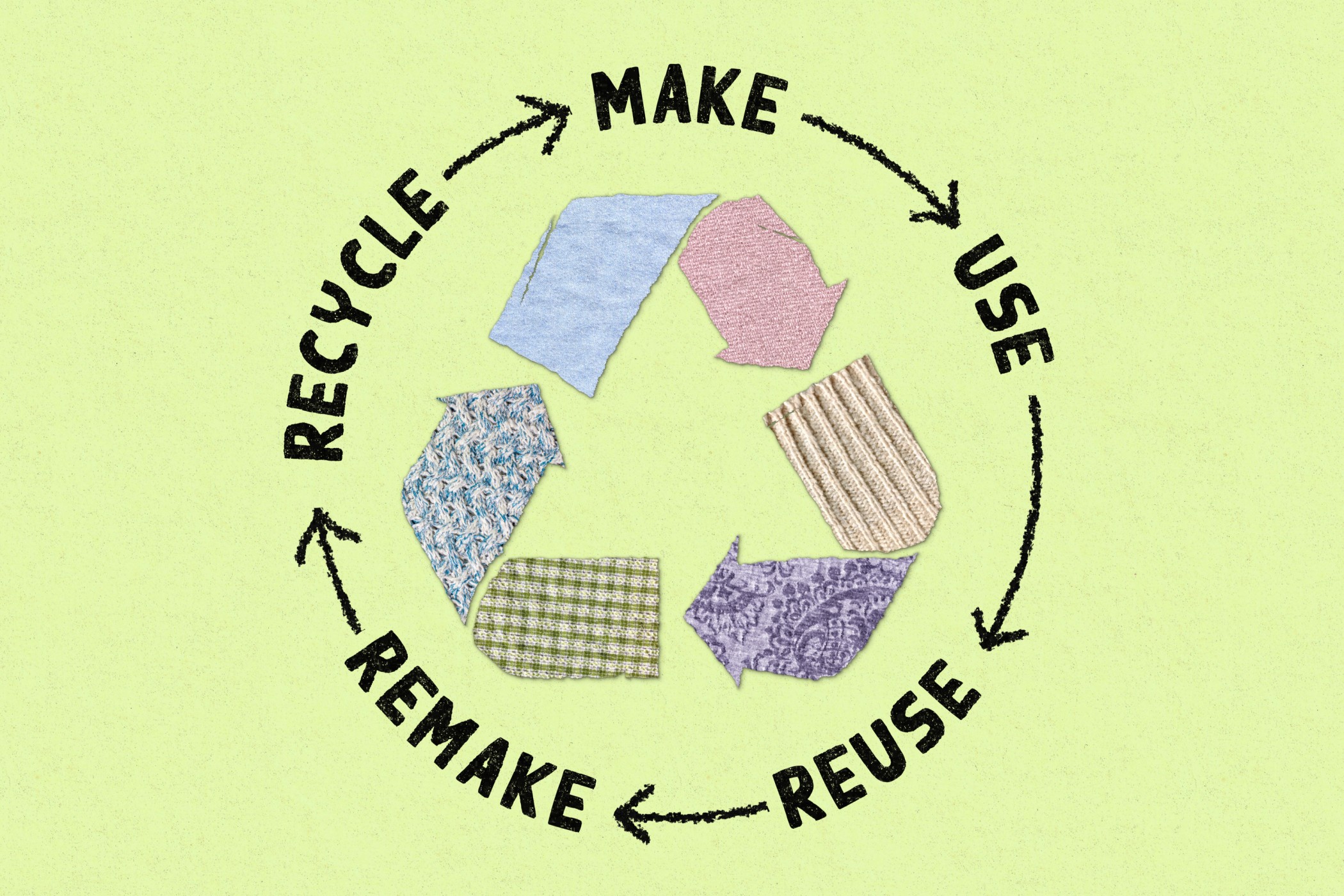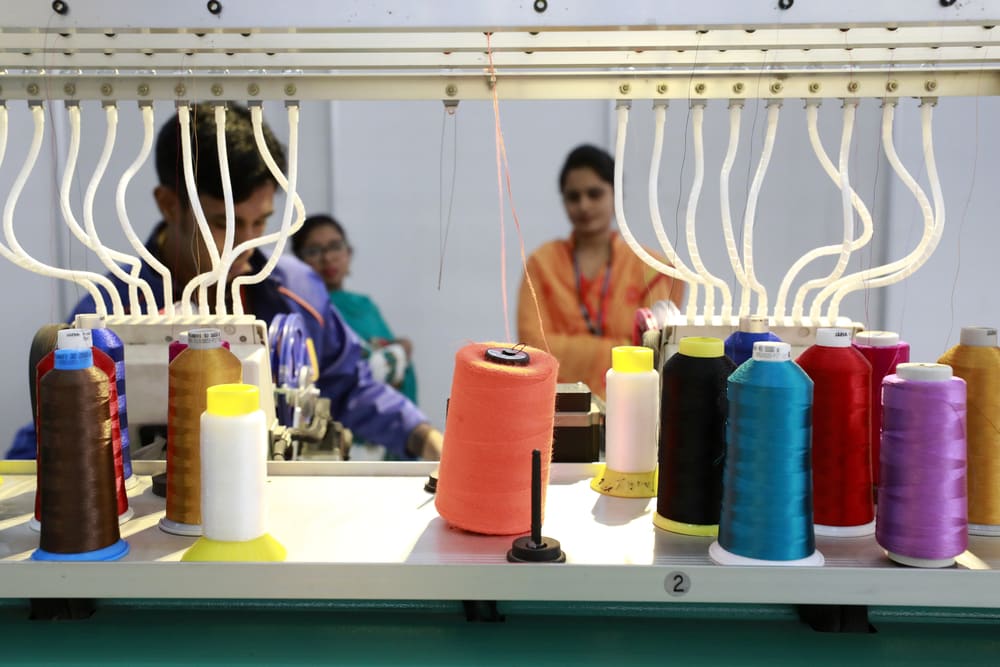5 Innovations Made in the Textile Industry in 2022



Sustainable fashion is no longer a new concept to anyone involved with the fashion industry. Not just industry insiders but even consumers these days are aware of the multitude of challenges the linear economy poses. People understand the terms “Circular Fashion” and “Sustainable Fashion” and use them frequently in their discourse.
These days, as a brand, it is not enough to mention that you are following sustainable practices. The questions being asked are: “What concrete measures are you taking as a brand?” or “What does your carbon footprint calculation say?” In such a scenario, more and more brands are embracing sustainable methods for their manufacturing processes. Practices like carbon footprint calculation with a vision to reduce the overall carbon footprint are a priority in every brand’s operating plans.
With sustainable fashion taking such an important place in every brand’s strategy, irrespective of whether it is a new fashion brand or a legacy, research in the industry is also geared towards innovations that support these strategies. It won’t be an exaggeration to say that sustainable fashion is here to stay, and the sooner a brand adopts it, the better it will be for its long-term plans.
Impact of sustainable fashion

The emphasis on sustainable fashion is due to many reasons. The linear economy, or the traditional business models of the fashion industry, has a number of problems. Some common complaints against the industry include the following:
- Over-utilisation of natural resources as raw materials
For instance, it is estimated that manufacturing a single pair of jeans uses anywhere between 400 to 10,000 liters of water! This number may come as a shock to many, but this is the rate at which the industry utilizes some precious resources. On top of this, fast fashion encourages discarding these garments soon enough to follow the latest trends.
- Unhealthy working conditions
The next complaint is regarding the working conditions of the workforce employed. Be it the use of toxic chemicals in the manufacturing process, unhygienic work conditions, or long working hours, the overall impact of fast fashion is a big negative.
- Improper waste disposal
The by-products of the manufacturing process and their disposal is also a major concern. Not just these, the finished products are disposed of quickly, filling up landfills—causing major environmental concerns. The carbon footprint calculations of a brand take all this into consideration, painting an extremely bleak picture of the current scenario as well as for the future.
The advocates of sustainable fashion argue that the practices of the circular economy can have a significant impact in improving all of these factors. The reduced use of natural resources, reuse of finished products, and recycling of end products can drastically improve the carbon footprint calculation of any brand.
The impact of sustainable practices is not only felt on the environment but other aspects of the business as well. An improvement in the working conditions of the workforce—reduction in the use of harmful chemicals with long-term side effects and usage of natural raw materials—is a big contributor to economic and health aspects. The improved brand image to imbibe eco-friendly practises is an intangible benefit of sustainable fashion. Thus, these practises allow for a holistic improvement instead of just focusing on carbon footprint calculation.
Innovations to support sustainable fashion

With such important goals in the picture, it is no wonder that research and development in the textile industry are geared towards achieving them. The latest innovations in the field have at least some component that supports sustainable fashion in one way or the other. Whether it is the use of technology or the identification of new biodegradable raw materials, each innovation contributes towards improving carbon footprint calculation. Some interesting innovations that are garnering attention in the textile industry are listed below. If you are a brand already established in the field or a beginner, these might be of interest to you.
1. Temperature-sensitive cloth
One of the most talked-about innovations of the year is the temperature-sensitive cloth. Showcased by industry leader Ralph Lauren, this material is to be used for Team USA uniforms for the Winter Games. The cloth is reported to have an intelligent insulation mechanism that helps regulate internal temperature, depending on the external temperature. This helps to reduce the need for having multiple outfits for different seasons. Thus, this new material reduces the manufacturing as well as the consumption of sportswear, thereby reducing carbon footprint.
2. Wearable electronics
This has been the topic of discussion in the industry for some time now. As of now, the wearables are a separate category that needs to be worn separately—whether as a watch or glasses. However, the effort is to create fabrics that allow the users to wear the electronics without having to deal with wires and connections attached to the cloth. The discovery of new materials like Graphene might help make this dream a reality. Wearable electronics have multiple uses, including health condition monitoring for sportsmen as well as patients. However, a bigger impact these will have is on the reduction of additional electronics and corresponding e-waste. The overall carbon footprint calculation of a brand will show a positive indication as soon as these garments become a reality.
3. Biodegradable raw materials
The biggest concern synonymous with fast fashion is the use of non-biodegradable raw materials. This not only increases wastage but also contributes significantly to carbon emissions for a long time. Thus, many innovators across the globe have been working to find a sustainable alternative. The number of innovations in this area is truly mind-boggling. Companies have been able to produce many alternatives by using biodegradable materials ranging from seaweed like kelp, kapok, apple pectin, and wood to orange and banana fibers for fabric production. The use of these materials is a great step towards cutting down carbon emissions, thereby improving carbon footprint calculations for brands.
4. Virtual shows and models
“Necessity is the mother of all innovations,” as the saying goes. Frequent lockdowns and inability to host real-time fashion shows due to the pandemic forced the industry to rethink the ways it conducted business. While some brands had already started their digital journeys, the pandemic accelerated this trend. Virtual fashion shows, even though they were a necessity, had a great advantage. There was no need for the brands to travel long distances. This drastically cut down carbon emissions from aviation and other means of transport. While the pandemic-related lockdowns may have eased, the innovation of virtual shows is here to stay. Some innovative companies have gone a step further and have created virtual models for their brands. This is a great step in the overall transition towards a more sustainable business model.
3. Augmented reality/virtual reality
Conceptually, the idea of AR/VR has been around for some time. But the leaps and bounds in the technology to enable the same have contributed largely towards using them at scale. From personalised fitting recommendations to enhancements in the overall purchasing experience has connected well with the audience. All this, without having to manufacture thousands of samples, has a significant contribution in reducing waste; thereby, reducing carbon emissions. This is a great way to improve carbon footprint calculation for any brand.
Closing the loop
Sustainable fashion, or circular fashion, as it is also known, has a great advantage because of its inherent cyclical nature. The effort of all innovators is to close the loop to minimise wastage. This effort is critical towards ensuring a sustainable future for the generations to come as well as for the fashion industry. Thus, keeping track of the innovations and utilizing them can help brands build a strong future.
If you are a brand that is interested in knowing more about such trends in the fashion industry and their impact on business, you need to identify the right channels to stay updated. Also, having the right partners to enable the application of these innovations in your business is equally important. A great place to find such reliable partners to support you in your journey towards circular fashion is Fashinza. Not just the right partners, you can find an in-depth analysis of industry trends and the best way forward for your brand on this platform.
An end-to-end B2B platform dedicated to the fashion industry, Fashinza is a great place to find a thriving community of brands, manufacturers, and suppliers, all in one place. Before getting into a business partnership, you can interact with the industry players, and understand their strengths and commitment towards your goals. The partnership built on mutual trust and understanding can go a long way in developing a sustainable business model for your business. Head over to Fashinza now to find out what others in the industry are doing and find the right partners for you.



















